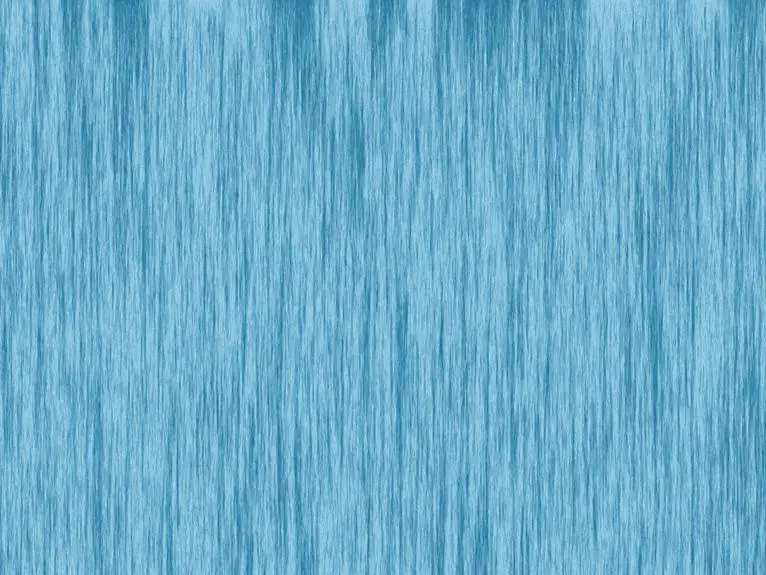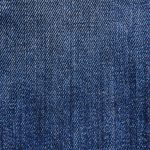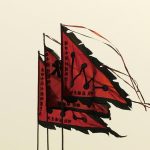When you're looking to spot high-quality damask, it's crucial to start with the fabric's weave. You'll want to focus on intricate, woven patterns instead of printed designs, as this distinction can reveal much about the fabric's durability and craftsmanship. Pay attention to thread count, texture, and color vibrancy—these elements all play a role in determining quality. But there's more to consider, and understanding how each factor contributes can help you make an informed choice. Curious about the specific details that differentiate a mediocre piece from an exceptional one?
Table of Contents
Understanding Damask Fabric
When you explore damask fabric, you'll find it's a luxurious textile known for its intricate patterns and rich texture.
Originating from the Middle Ages, damask features a unique, reversible design that combines both the weave and the pattern into a single fabric. Typically made from silk, linen, or cotton, this fabric's sheen and depth create an elegant appearance, making it a popular choice for upholstery, draperies, and table linens.
You'll notice that high-quality damask boasts a smooth feel and a weighty drape. The patterns often depict floral or geometric designs, adding sophistication to any setting. Pay attention to the color; premium damask uses rich, vibrant dyes that enhance the fabric's beauty without fading easily over time.
When shopping, look for consistent patterns and a precise weave. If the design seems misaligned or uneven, it could signal lower quality.
Lastly, don't forget to check the care instructions. High-quality damask typically requires special care, so be prepared to invest time in maintaining its luxurious look. Understanding these key characteristics will help you make an informed choice when selecting damask fabric for your needs.
Examining the Weave
When you examine the weave of damask, pay attention to weave density, as it can indicate the fabric's durability.
Check for pattern consistency to ensure the design flows seamlessly across the material.
Also, consider the quality of the fibers used, as they significantly impact the overall look and feel.
Weave Density Analysis
Examining the weave density is crucial for identifying high-quality damask, as it reflects the fabric's durability and visual appeal. To assess the density, you'll want to look closely at the number of threads per inch. A higher thread count typically indicates a denser weave, which contributes to a more luxurious feel and increased strength.
When you feel the fabric, it should have a smooth, even texture without any gaps or irregularities. You can run your fingers over the surface to check for consistency. If the fabric feels rough or uneven, it might be a sign of a lower-quality weave.
Additionally, pay attention to the pattern. High-quality damask features intricate designs that are tightly woven, creating a rich visual experience. If you notice the pattern appearing blurred or fuzzy, it may indicate a lack of attention to detail in the weaving process.
Pattern Consistency Checks
To ensure you're choosing high-quality damask, closely inspect the pattern consistency across the fabric. A well-made damask should feature a repeating pattern that's uniform throughout. Check that the motifs align perfectly and that there are no inconsistencies or disruptions in the design. An inconsistent pattern can indicate poor craftsmanship, so pay attention to the details.
Here's a quick checklist to help you evaluate the pattern consistency:
| Feature | What to Look For | Importance |
|---|---|---|
| Pattern Alignment | Motifs should line up seamlessly. | Ensures a polished appearance. |
| Repetition | Look for a consistent repeat length. | Reflects quality craftsmanship. |
| Color Consistency | Colors should be uniform and rich. | Impacts overall aesthetics. |
| Weave Uniformity | Check for even texture throughout. | Indicates a well-executed weave. |
Material Quality Assessment
Assess the weave closely, as it plays a crucial role in determining the overall quality of damask fabric. Look for a tight, consistent weave; this indicates that the fabric has been crafted with care. High-quality damask features intricate patterns woven directly into the fabric rather than printed on top. This depth in design not only enhances the visual appeal but also contributes to the durability of the material.
Check the thread count too. A higher thread count generally means a denser and more luxurious fabric. Aim for at least 200 threads per square inch for optimal quality. You'll also want to feel the fabric; it should have a smooth, soft texture without any rough areas. If it feels coarse or thin, it mightn't be the best choice.
Lastly, examine the color depth. Rich, vibrant hues that don't fade easily are a sign of premium quality. If you notice any uneven coloring or fading, steer clear. By focusing on these key aspects of the weave, you'll be well-equipped to identify high-quality damask that meets your needs.
Analyzing the Pattern
When you analyze the pattern of damask, pay attention to its complexity and depth.
A high-quality damask should feature intricate designs that draw your eye, while the colors should remain consistent and vibrant throughout.
Noticing these details can help you identify the true craftsmanship behind the fabric.
Pattern Complexity and Depth
A high-quality damask pattern captivates the eye with its intricate designs and rich depth, showcasing the craftsmanship behind each weave. When you're examining a damask, pay attention to the complexity of its patterns. A well-designed damask will feature a harmonious blend of motifs that form a cohesive visual story. Look for layering effects that create depth, as this adds to the overall richness of the fabric.
To help you assess the pattern complexity, consider these aspects:
| Aspect | What to Look For |
|---|---|
| Motifs | Diverse shapes and sizes, including florals and geometric designs. |
| Layering | Overlapping elements that create a three-dimensional feel. |
| Repetition and Flow | A balanced repetition that guides the eye smoothly across the fabric. |
Color Consistency and Vibrancy
Vibrancy and consistency in color are essential elements that define the quality of damask, enhancing its visual appeal and ensuring that the patterns stand out beautifully.
When you examine a piece of damask, take a close look at the colors. High-quality damask will feature rich, saturated hues that catch the light and draw your eye. If the colors appear dull or washed out, it's likely a sign of inferior fabric.
Next, check for color consistency across the entire piece. A high-quality damask will have uniform color throughout, with no fading or uneven patches. If you notice discrepancies, it could indicate poor dyeing techniques or low-quality materials.
Don't forget to consider how the colors interact with the pattern. The best damask will balance contrasting shades while maintaining harmony, making the design pop without overwhelming it.
Lastly, when you touch the fabric, the colors should feel vibrant, almost alive. If the colors seem to blend into the background or lack depth, you might want to keep searching.
Evaluating the Material
To determine the quality of damask, you'll want to closely examine the fibers and weave for durability and richness. High-quality damask should feel luxurious and substantial, which is often a good indicator of its craftsmanship.
Start by checking the fiber content, as natural fibers like silk or cotton typically yield the best results.
Here are some key aspects to look for:
- Fiber Type: Opt for fabrics made from 100% silk or a cotton-silk blend for a rich feel and shine.
- Weave Density: A tightly woven damask will be more durable and resistant to fraying; it should feel smooth and not easily snag.
Checking Weight and Drape
Weight and drape play a significant role in assessing the quality of damask, as they influence how the fabric hangs and moves.
When you're evaluating damask, start by picking up the fabric and feeling its weight. High-quality damask should feel substantial but not overly heavy. It should have a nice, balanced weight that signifies durability without being cumbersome.
Next, consider the drape. To do this, hold the fabric by one end and let it fall. Observe how it flows; a good damask should cascade beautifully, forming soft, elegant folds. If it feels stiff or rigid, it might indicate lower quality.
You can also test the drape by wrapping the fabric around your arm or holding it up to see how it behaves. Quality damask will mold to your shape without losing its elegance.
Lastly, pay attention to how the fabric responds when you move it. High-quality damask should feel fluid and responsive, enhancing its overall appeal in your design or decor.
Trust your instincts; if the weight and drape feel right, you're likely looking at a top-notch fabric.
Assessing Color Quality
A rich, consistent color is essential for determining the quality of damask fabric, so take a close look at its hue under various lighting conditions. Natural light can reveal any inconsistencies or fading that artificial light might mask. As you assess the color, look for depth and vibrancy, which indicate high-quality dyeing techniques.
Keep these tips in mind while checking the color quality:
- Evenness: The color should be uniform throughout the fabric; any splotches or uneven patches suggest inferior quality.
- Colorfastness: Test the fabric by rubbing a damp white cloth against it. If you see color transfer, the dye isn't set properly, which can lead to fading over time.
Identifying Care Requirements
Knowing how to spot high-quality damask also means understanding its care requirements to maintain that vibrant color and intricate design over time.
To keep your damask looking its best, start by checking the care label. Most high-quality damask fabrics are made from silk or cotton and often require gentle washing methods. Using cold water and a mild detergent prevents fading and preserves the texture.
When washing, avoid harsh chemicals and fabric softeners. Instead, opt for a delicate cycle or hand wash to minimize wear. If you're unsure about machine washing, consider dry cleaning as a safe alternative.
After washing, hang your damask to air dry rather than using a dryer, which can cause shrinkage and damage. When ironing, use a low heat setting and place a cloth between the iron and the fabric to avoid scorching.
Store your damask items in a cool, dry place, away from direct sunlight, to prevent discoloration.
Frequently Asked Questions
What Are the Historical Origins of Damask Fabric?
Damask fabric originated in ancient China, evolving through trade routes into Europe by the Middle Ages. You'll find its intricate patterns and luxurious feel were prized by royalty, showcasing craftsmanship that's stood the test of time.
How Does Damask Compare to Other Fabric Types?
Damask's intricate patterns and reversible designs set it apart from other fabrics. You'll find it's often thicker and more luxurious than plain weaves, making it ideal for formal settings and upholstery, enhancing elegance and style.
Can Damask Be Used for Outdoor Furniture?
You can use damask for outdoor furniture, but it's important to choose a treated version. Regular damask may fade or degrade quickly in sunlight, so look for outdoor-specific fabrics that offer better durability and weather resistance.
What Is the Typical Cost Range for High-Quality Damask?
High-quality damask usually ranges from $30 to $100 per yard, depending on factors like the fabric's composition and design intricacy. When shopping, consider your budget and desired aesthetic to make the best choice.
Are There Ethical Concerns With Damask Fabric Production?
Yes, there're ethical concerns with damask production. You should consider labor practices, environmental impacts, and sourcing methods. Always research brands to ensure they're committed to sustainability and fair treatment of workers in their supply chains.
- Tetron Fabric for Marine Applications: Durability and Use Cases - June 18, 2025
- Tetron Fabric for Outdoor Furniture: Weather Resistance and Care - June 18, 2025
- Tetron Fabric for Wall Coverings: Style and Application Tips - June 18, 2025







